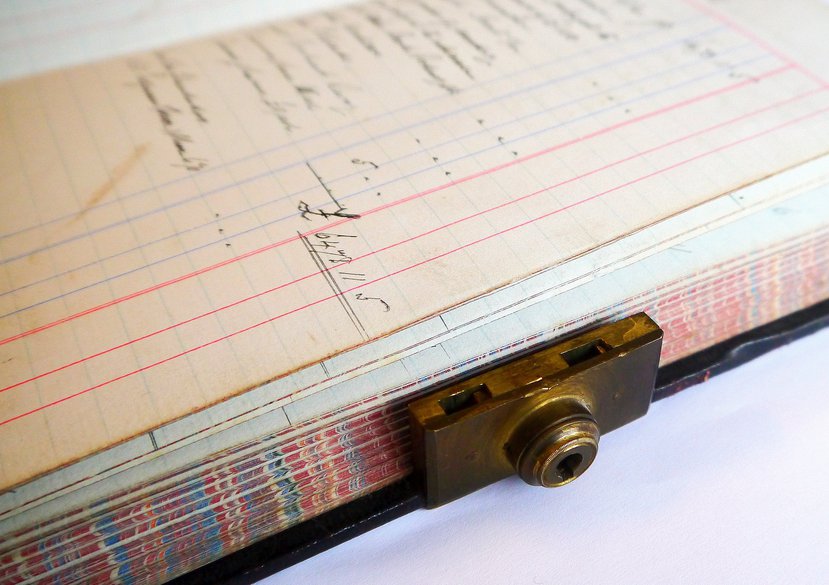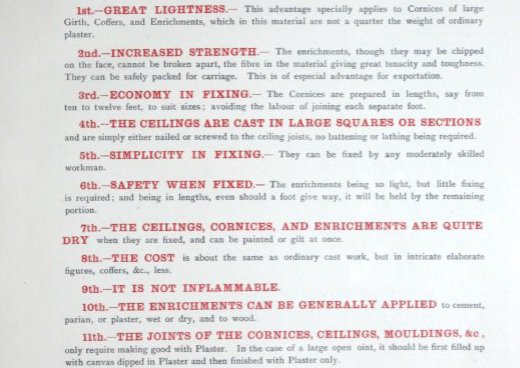
The importance of being specialist? The impact of component suppliers on metropolitan building practices, 1850-1914
Between 1850 and 1914, London witnessed an exponential rise in the number of decorative and built components manufactured and stocked by specialist firms. This thesis argues that these prefabricated components were not only shaped by existing methods, they helped to alter and establish new practices and modes of organisation within built production. Attention is given to the broader socio-material networks that were involved in how these products were made, how they were promoted and displayed, and how specialist construction work was contracted, managed and paid for.
From fibrous plaster ceiling panels to circular iron staircases to plumbing works, prefabricated elements became increasingly common on London’s building sites. Their suppliers became part of London’s building coalition and the resulting builds formed part of the metropolis’s cityscape. Previous studies have identified this growth in the number of building-related firms in the capital during the nineteenth century. However, how component suppliers operated during this period remains understudied. Historians have instead concentrated on the large-scale master builder, separating studies of construction from design, which has generally been treated as resting solely in the imaginative capabilities of the architect. This omission has led to a misconception in the existing literature: that it was only in the late 1930s that branded products and specialist subcontracting became common phenomena in construction, transforming the shape of London’s building world. By combining methodologies from both design and architectural history, the project aims to present a far more complex, co-opted chain of urban production.
This research considers how and why these earlier shifts towards specialisation occurred. To examine this core question, the research mobilises under-explored materials at the Victoria and Albert Museum alongside collections held by the London Metropolitan Archive, National Archive, R.I.B.A and local record offices. The types of materials examined include sales accounts, design books, builder's ledgers, architectural journals, catalogues, exhibition literature, surviving objects, models and buildings, contracts, site books, correspondence and the records of professional institutions.
Each of the thesis’s three sections - 'making', 'communications' and 'contractual relations' - work together to analyse the commercial development of components: from the skills, materials and laws that shaped their manufacture; to the novel communication channels that aided their promotion; to how their inclusion in contracts repositioned professional boundaries between the architect, contractor and client. Through this overview approach, the thesis ultimately contributes a new interpretation of the collaborative networks, technologies and experiences involved in nineteenth century construction. It does so from an interdisciplinary perspective, drawing on concepts from economic geography, the history of technology, sociology and urban studies.
Key details
School, Centre or Area
Area of expertise
Supervisors
Gallery
More about Roxanne
Biography
Roxanne Ravenhill is an architectural and design historian based between the RCA and Victoria & Albert Museum. She holds a Master's degree from the joint programme between the two institutions and a Bachelor's degree from the University of Warwick. She has been awarded an AHRC Collaborative Doctoral Award to further her MA work on nineteenth century construction networks and the working methods of late Victorian master builders. Her thesis explores the wider impact specialist component suppliers had on metropolitan building practices between 1850 and 1914.
Degrees
BA (Hons) History of Art, University of Warwick, 2014
MA History of Design, Royal College of Art/ V&A, 2016
Experience
Teaching assistant, MA History of Design, 2020-2021
Cataloguing assistant, Archive of Art and Design, V&A, 2018-2020
EAP support tutor, RCA, 2018
Research assistant, Marking Time, 2016-2017
Assistant to postgraduate administrator and research assistant, V&A, 2016-2017
Awards
Eliahou Dangoor Science Scholarship, 2010-2011
Undergraduate Research Student Scholarship, 2012
Oliver Ford Trust Scholarship, 2014-2016
Funding
AHRC Collaborative Doctoral Award, 2017-2023
Publications
General researcher, Marking Time: Objects, People, and Their Lives, 1500-1800, ed. by Angela McShane and Edward Town (New Haven: Yale Center for British Art, 2020)
Roxanne Ravenhill, ‘Trollope and Sons, Colls and Sons: Re-appraising the position of skill and interior design in the Victorian building world, c. 1850-1903’ (MA Thesis, Royal College of Art, London, 2016)
Conferences
'‘Finest selection of extant goods required’: Construction networks under the Victorian master builder', Victorian Society Anniversary Lecture Series, Art Workers' Guild, November 2018
'‘Used by all leading Architects and Builders’: Contracting networks in Victorian London', Association for Art History Annual Conference, King's College London and Courtauld Institute of Art, April 2018


